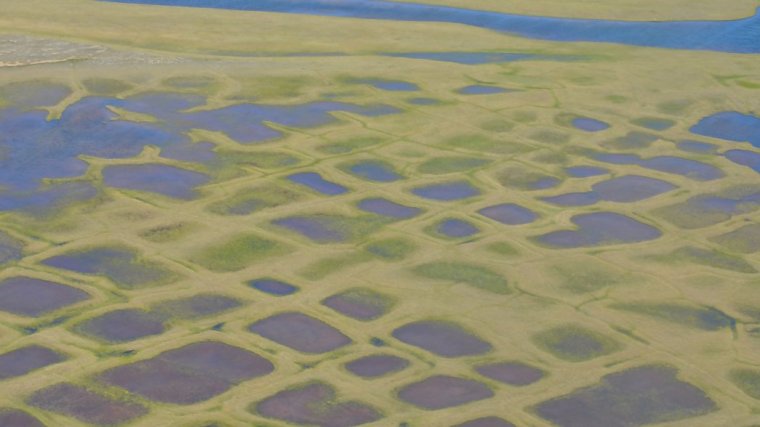| News / World News |
Alaska Shows No Signs of Rising Arctic Methane
NASA | NOVEMBER 20, 2014
Despite large temperature increases in Alaska in recent decades, a new analysis of NASA airborne data finds that methane is not being released from Alaskan soils into the atmosphere at unusually high rates, as recent modeling and experimental studies have suggested. The new result shows that the changes in this part of the Arctic have not yet had enough impact to affect the global methane budget.

This photo taken during the CARVE experiment shows polygonal lakes created by melting permafrost on Alaska's North Slope. ![]()
This is important because methane is the third most common greenhouse gas in the atmosphere, after water vapor and carbon dioxide. Although there is much less of it in the air, it is 33 times more effective than carbon dioxide at trapping heat in the atmosphere and adding to greenhouse warming.
High concentrations of atmospheric methane have been measured at individual Arctic sites, especially in Siberia. This adds to the concern that massive methane releases are already occurring in the far North. NASA's multiyear Carbon in Arctic Reservoirs Vulnerability Experiment (CARVE) is the first experiment to establish emission rates for a large region of the Arctic.
Vast amounts of carbon are stored in undecayed organic matter -- dead plants and animals -- in Arctic permafrost and peat. Scientists estimate that there is more than twice as much carbon locked in the frozen North as there is in the atmosphere today. The organic material won't decay and release its carbon as long as it stays frozen.
But climate change has brought warmer and longer summers throughout the Arctic, and permafrost soils are thawing more and more. If large amounts of undecayed matter were to defrost, decompose and release methane and carbon dioxide into the atmosphere, the impact on global temperatures would most likely be enormous.
YOU MAY ALSO LIKE





